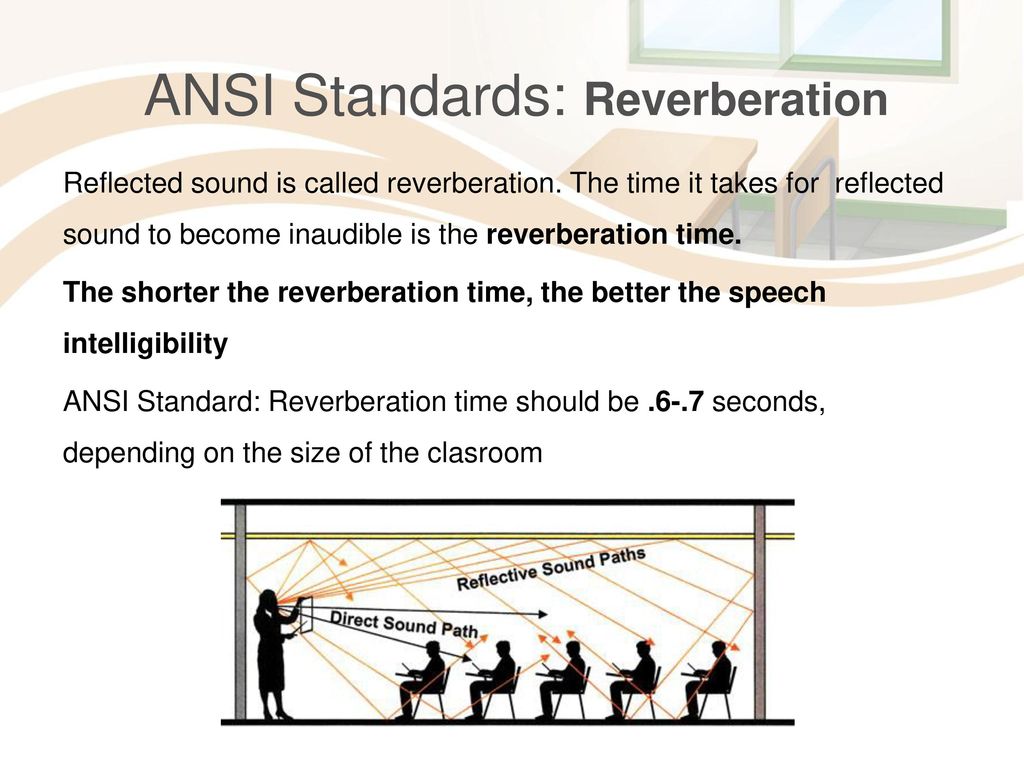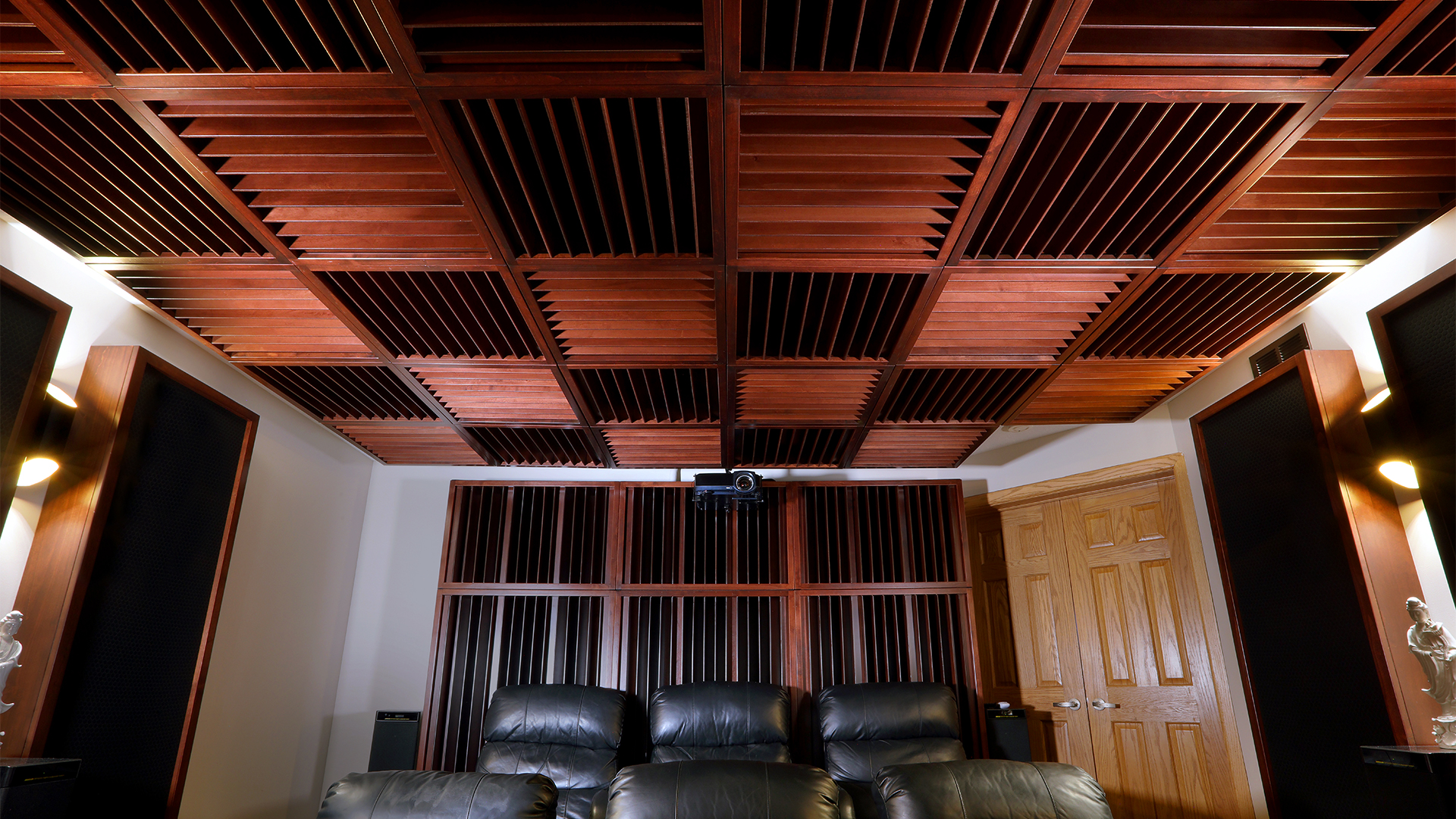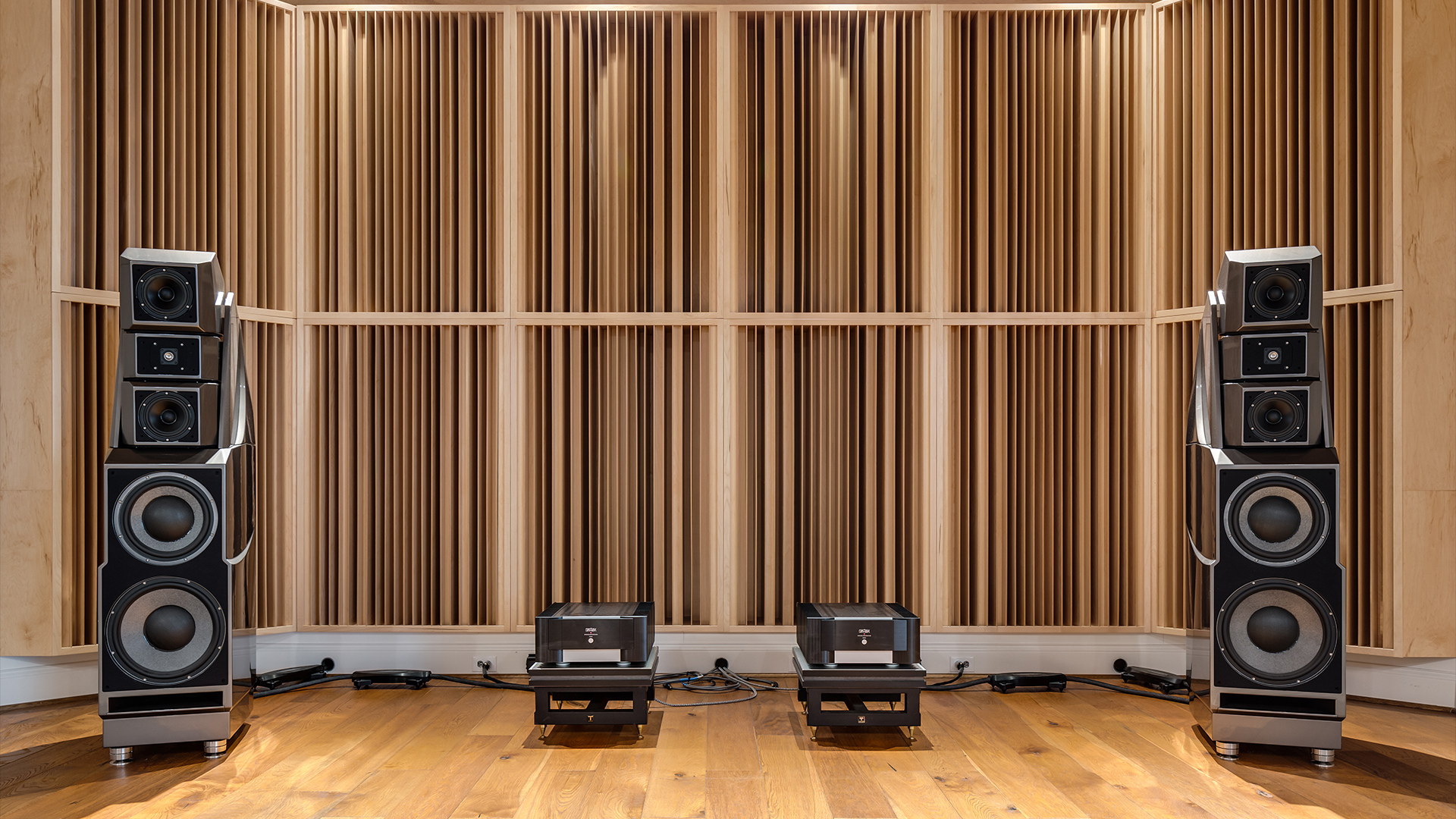Diffusion
Diffusion is a technology to make a small room sound larger. It is also a technology that makes the untreated issues in your room more pronounced by highlighting those untreated issues. Diffusion acts as a magnifying glass. It will increase separation and improve definition but it will also magnify the issues you have not treated successfully within your room. If you are going to use sound diffusion in small rooms you must treat all outstanding issues first so that diffusers can do their job better and more effectively. You must treat the low-frequency energy within the rooms first and foremost since it is the low-frequencies that produce the middle and high-frequency issues. Using the correct low-frequency technology to manage unwanted pressure issues is a must. Fundamentals and harmonics are related to each other. The fundamentals produce harmonics. Middle and high-frequency management must also occur using the correct rates and levels of absorption. Not all absorption products in the marketplace are equal and care must be taken to select the correct rate and level for music and voice.

Reflected sound is called reverberation. The time it takes for reflected sound to become inaudible is the reverberation time. The shorter the reverberation time, the better the speech intelligibility ANSI Standard: Reverberation time should be seconds, depending on the size of the clasroom Reverberation time is the common cold of classroom acoustics. To reduce the reverb time either decreasing the volume and increasing the absorbtion.
Quadratic Diffusion
There is only one true diffuser technology to use. A diffused sound field within a room requires that the tool you use to create that diffused sound field has the capacity to produce the diffusion required in all room sound fields. We have three sound fields within our rooms. We have floor to ceiling, sidewall to sidewall, and front wall to rear wall sound fields that must be created and managed. In order for a diffuser to create these three diffused sound fields within our rooms, we need our quadratic diffusers to provide no spatial irregularities in the rooms’ frequency response. We need it to make sure there are no beats in the decay rates within each sound field. The decay rates must be exponentially smooth and be at the same rate throughout the room three sound fields. Finally, the reverberation times must be the same in all three sound fields. Only quadratic diffusion can satisfy these 5 rigid criteria. Many companies will claim that their product is a true sound diffusion technology when it could never satisfy the criteria listed above. Most “sound diffusion technologies are really sound redirection products. Don’t be fooled by their names.
Room Usage
What you do in your room will have an impact on what type of diffusion you use and where you place it. Every room usage requires different surface area coverage along with the correct frequency response of the diffusion technology. A live room will have different diffusion requirements than a control room. A vocal room will have different diffusion requirements than a control room. Every room usage has its own set of diffusion needs. Let’s take a home theater as our example. In a home theater, we want to use diffusion on the ceiling and the rear wall. Diffusion on the ceiling will make our lower ceiling height sound like it is much higher. Diffusion on the rear wall will make the distance from our listening position to the rear wall sound much larger. Diffusion is a technology that minimizes the impact of reflections and reduces our brain’s chances of localization by minimizing the impact of larger reflections.
Quarter wavelength rules: https://www.acousticfields.com/quarter-wavelength-rule/
Diffusion Sequences
A quadratic diffuser is a series of wells or troughs that are designed with particular depth and width. The series of wells or troughs are designed to correspond to a specific frequency response which is calculated based upon a prime number. Prime numbers include 7,11, 13, 17, 19, and 23. A complex residue formula is used to create the depths of each well. The well depths are based upon quarter wavelength rules and the well widths are based upon half-wavelength rules. Let’s use a prime number 13 as an example. A prime number 13 quadratic diffuser will have 12 wells each with a certain depth which is based upon quarter wavelength rules. A prime 13 diffuser will have well depths of 1″ 4″, 9″ 3″ 12″ 10″, 10″, 12″, 3″, 9″, 4″, 1″ . Each of these well depths corresponds to a certain octave range. For example, using the 12″ depth if we take and multiply the 12″ distance by 4 for a quarter wavelength rule we achieve 48″. A 4′ long wavelength is equal to 280 Hz. wave. We arrive at 280 Hz. number by taking the speed of sound at 1,130 ft/sec. and dividing that number by 4′. The larger the prime number, the lower the frequency it will start to diffuse at. Larger prime numbers require much more distance to be installed within. Care must be taken to when using sound diffusion in small rooms to match the distances from the listening position to the prime number you are considering using. You must have enough distance to allow for the lowest wavelength in your diffuser to fully form.
Diffusion Operation
A quadratic diffuser has a series of wells or troughs. Energy enters the wells and is then directed back and forth between the well width and depth. This process is then redistributed back into the room in a 180-degree hemispherical array back into the room. The array of energy redistribution is dependent on the positioning of the diffuser within the room. A vertically positioned diffuser will distribute energy back into the room into a horizontal domain. A horizontally positioned diffuser will spread out energy in a vertical array back into your room. If you combine both one dimensional vertical and horizontal diffusion in the sound diffusion in small rooms, you create two dimensions of diffusion. The choice between one-dimensional diffusion and two-dimensional diffusion is dependent on room usage, the distances from the walls to the listening position, and room usage. Once again care must be taken in using sound diffusion in small rooms since the distances involved are small and the requirements for most diffusers are large.
Diffuser Materials
The best type of material to use in building your quadratic diffuser is softwoods. Stay away from plastics, MDF, and hardwood types. Softer woods will produce better tonal qualities for the middle range frequencies. Quadratic diffusers work in the middle range frequencies from 250 Hz. – 3,400 Hz. This is the middle range frequency range for our vocals. Vocals connect us to our music. In fact, music is “wrapped” around our vocals. Setting up playback systems focuses on the voice-first and foremost. When using sound diffusion in small rooms we must use the proper diffusion frequency response that deals with the accurate playback of the human voice. With voice tonal balance is critical and we must use the softest woods we can for our diffusers along with the proper prime number which will produce the necessary frequency response range when using sound diffusion in small rooms.
Diffusion Costs
Diffusers require that you cover large surface areas in order to work properly. With many parts and finishing processes involved, the cost can play havoc with any budget. If you have the necessary carpentry skills and a proper working environment, you can build your own from our DIY series of diffuser build plans. Once you have determined which diffuser prime number to use for your particular room usage, you can build the proper prime number for your sound diffusion in small rooms. You must first determine your usage. Next, calculate the distance from your wall surfaces to your listening position. Finally, make sure you have the available depth to support the diffuser then chose the prime number that will work for your space requirements and distances from the diffuser to the listening position. You can order the plans from our DIY series below. If you need assistance with this process, fill out the free room analysis form below and we will assist you with these calculations.
DIY Diffusers: https://www.acousticfields.com/product-category/d-i-y-acoustic-treatment/
Free Room Analysis: https://www.acousticfields.com/free-room-analysis/
About Us At Acoustic Fields: https://www.acousticfields.com/about/








